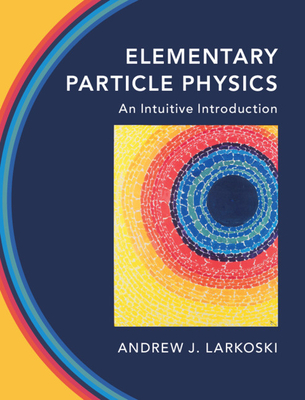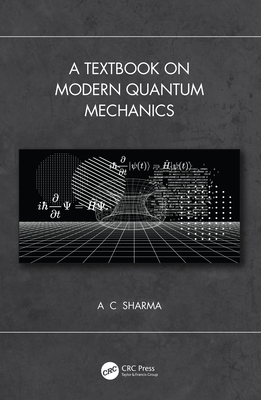Modern Physics for Scientists & Engineers, 4/e (Hardcover)
Stephen T. Thornton , Andrew Rex
- 出版商: Cengage Learning
- 出版日期: 2012-01-01
- 售價: $1,311
- 語言: 英文
- 頁數: 688
- ISBN: 1133103723
- ISBN-13: 9781133103721
-
相關分類:
物理學 Physics
-
其他版本:
Modern Physics for Scientists and Engineers, 5/e (Paperback)
買這商品的人也買了...
-
 高頻通訊電路設計
高頻通訊電路設計$600$588 -
 Statistical Mechanics: Algorithms and Computations (Paperback)
Statistical Mechanics: Algorithms and Computations (Paperback)$1,200$1,176 -
 通訊系統 (Communication Systems, 5/e)
通訊系統 (Communication Systems, 5/e)$680$612 -
 An Introduction to Numerical Methods: A MATLAB Approach, 3/e (Hardcover)
An Introduction to Numerical Methods: A MATLAB Approach, 3/e (Hardcover)$1,250$1,225 -
 熱力學 (Cengel, 8/e)
熱力學 (Cengel, 8/e)$820$779 -
 機器學習:類神經網路、模糊系統以及基因演算法則, 4/e
機器學習:類神經網路、模糊系統以及基因演算法則, 4/e$390$351 -
 Design of Analog CMOS Integrated Circuits, 2/e
Design of Analog CMOS Integrated Circuits, 2/e$1,600$1,520 -
 流體力學 (Cengel, 3/e) (授權經銷版)
流體力學 (Cengel, 3/e) (授權經銷版)$950$903 -
 Control Systems Engineering, 7/e (Paperback)
Control Systems Engineering, 7/e (Paperback)$1,260$1,197 -
 Concepts of Modern Physics (IE-Paperback)
Concepts of Modern Physics (IE-Paperback)$1,180$1,121 -
 Gravitation (Hardcover)
Gravitation (Hardcover)$2,500$2,450 -
 材料力學, 10/e (Hibbeler: Mechanics of Materials, 10/e)
材料力學, 10/e (Hibbeler: Mechanics of Materials, 10/e)$720$684 -
 積體電路測試實務, 2/e
積體電路測試實務, 2/e$300$270 -
 Electric Circuits, 11/e (GE-Paperback)
Electric Circuits, 11/e (GE-Paperback)$1,460$1,431 -
 視覺 SLAM 十四講:從理論到實踐, 2/e
視覺 SLAM 十四講:從理論到實踐, 2/e$648$616 -
 電子學 (進階應用), 10/e (Floyd: Electronic Devices (Conventional Current Version), 10/e)
電子學 (進階應用), 10/e (Floyd: Electronic Devices (Conventional Current Version), 10/e)$500$450 -
 $1,311Actuarial Mathematics for Life Contingent Risks, 3/e (Hardcover)
$1,311Actuarial Mathematics for Life Contingent Risks, 3/e (Hardcover) -
 $1,691Physics of Semiconductor Devices, 4/e (Hardcover)
$1,691Physics of Semiconductor Devices, 4/e (Hardcover) -
 $1,444Modern Physics for Scientists and Engineers, 5/e (Paperback)
$1,444Modern Physics for Scientists and Engineers, 5/e (Paperback) -
 射頻電路設計 — 理論與應用, 2/e
射頻電路設計 — 理論與應用, 2/e$474$450 -
 演算法, 4/e
演算法, 4/e$460$437 -
 A Course of Pure Mathematics, 3/e (Paperback)
A Course of Pure Mathematics, 3/e (Paperback)$1,260$1,197 -
 普通化學分章試題解析 (上), 9/e (適用: 後西醫.後中醫.私醫聯招)
普通化學分章試題解析 (上), 9/e (適用: 後西醫.後中醫.私醫聯招)$680$612 -
 普通化學分章試題解析 (下), 9/e (適用: 後西醫.後中醫.私醫聯招)
普通化學分章試題解析 (下), 9/e (適用: 後西醫.後中醫.私醫聯招)$680$612 -
 量子力學概論 (原書第3版)
量子力學概論 (原書第3版)$888$844
商品描述
MODERN PHYSICS presents the latest discoveries in physics, and offers a contemporary and comprehensive approach with a strong emphasis on applications. In order to illustrate the process behind scientific advances and give students a historical perspective, the authors discuss the experiments that led to key discoveries covered in the text. A flexible organization allows you to select and teach topics in your preferred sequence without compromising your student's learning experience. A sound theoretical foundation in quantum theory is included to help physics majors succeed in their upper division courses.
目錄大綱
-
1. THE BIRTH OF MODERN PHYSICS.
Classical Physics of the 1890s. The Kinetic Theory of Gases. Waves and Particles. Conservation Laws and Fundamental Forces. The Atomic Theory of Matter. Unresolved Questions of 1895 and New Horizons. Summary.
2. SPECIAL THEORY OF RELATIVITY.
The Apparent Need for Ether. The Michelson-Morley Experiment. Einstein''s Postulates. The Lorentz Transformation. Time Dilation and Length Contraction. Addition of Velocities. Experimental Verification. Twin Paradox. Spacetime. Doppler Effect. Special Topic: Applications of the Doppler Effect. Relativistic Momentum. Relativistic Energy. Computations in Modern Physics. Electromagnetism and Relativity. Summary.
3. THE EXPERIMENTAL BASIS OF QUANTUM PHYSICS.
Discovery of the X-Ray and the Electron. Determination of Electron Charge. Line Spectra.
Special Topic: The Discovery of Helium. Quantization. Blackbody Radiation. Photoelectric Effect. X-Ray Production. Compton Effect. Pair Production and Annihilation. Summary.
4. STRUCTURE OF THE ATOM.
The Atomic Models of Thomson and Rutherford. Rutherford Scattering. Special Topic: Lord Rutherford of Nelson. The Classical Atomic Model. The Bohr Model of the Hydrogen Atom.
Successes and Failures of the Bohr Model. Characteristic X-Ray Spectra and Atomic Number. Atomic Excitation by Electrons. Summary.
5. WAVE PROPERTIES OF MATTER AND QUANTUM MECHANICS I.
X-Ray Scattering. De Broglie Waves. Special Topic: Cavendish Laboratory. Electron Scattering.
Wave Motion. Waves or Particles? Uncertainty Principle. Probability, Wave Functions, and the Copenhagen Interpretation. Particle in a Box. Summary.
6. QUANTUM MECHANICS II.
The Schrödinger Wave Equation. Expectation Values. Infinite Square-Well Potential. Finite Square-Well Potential. Three-Dimensional Infinite-Potential Well. Simple Harmonic Oscillator.
Barriers and Tunneling. Special Topic: Scanning Probe Microscopes. Summary.
7. THE HYDROGEN ATOM.
Application of the Schrödinger Equation to the Hydrogen Atom. Solution of the Schrödinger Equation for Hydrogen. Quantum Numbers. Magnetic Effects on Atomic Spectra--The Normal Zeeman Effect. Intrinsic Spin. Special Topic: Hydrogen and the 21-cm Line Transition. Energy Levels and Electron Probabilities. Summary.
8. ATOMIC PHYSICS.
Atomic Structure and the Periodic Table. Special Topic: Rydberg Atoms. Total Angular Momentum. Anomalous Zeeman Effect. Summary.
9. STATISTICAL PHYSICS.
Historical Overview. Maxwell Velocity Distribution. Equipartition Theorem. Maxwell Speed
Special Topic: Superfluid 3^He. Summary.
10. MOLECULES, LASERS, AND SOLIDS.
Molecular Bonding and Spectra. Stimulated Emission and Lasers. Structural Properties of Solids. Thermal and Magnetic Properties of Solids. Superconductivity. Special Topic: Low-Temperature Methods. Applications of Superconductivity. Summary.
11. SEMICONDUCTOR THEORY AND DEVICES.
Band Theory of Solids. Semiconductor Theory. Special Topic: The Quantum Hall Effect. Semiconductor Devices. Nanotechnology. Summary.
12. THE ATOMIC NUCLEUS.
Discovery of the Neutron. Nuclear Properties. The Deuteron. Nuclear Forces. Nuclear Stability. Radioactive Decay. Alpha, Beta, and Gamma Decay. Special Topic: Neutrino Detection. Radioactive Nuclides. Special Topic: The Formation and Age of the Earth. Summary.
13. NUCLEAR INTERACTIONS AND APPLICATIONS.
Nuclear Reactions. Reaction Kinematics. Reaction Mechanisms. Fission. Fission Reactors.
Fusion. Special Applications. Special Topic: The Search for New Elements. Summary.
14. PARTICLE PHYSICS.
Early Discoveries. The Fundamental Interactions. Classification of Particles. Conservation Laws and Symmetries. Quarks. The Families of Matter. Beyond the Standard Model. Accelerators. Special Topic: Experimental Ingenuity. Summary.
15. GENERAL RELATIVITY.
Tenets of General Relativity. Tests of General Relativity. Gravitational Waves. Special Topic: Gravitational Wave Detection. Black Holes. Frame Dragging. Summary.
16. COSMOLOGY AND MODERN ASTROPHYSICS--THE BEGINNING AND THE END.
Evidence of the Big Bang. The Big Bang. Stellar Evolution. Special Topic: Planck''s Time, Length, and Mass. Astronomical Objects. Problems with the Big Bang. The Age of the Universe. The Standard Model of Cosmology. The Future. Special Topic: Future of Space Telescopes. Summary.
Appendix 1: Fundamental Constants.
Appendix 2: Conversion Factors.
Appendix 3: Mathematical Relations.
Appendix 4: Periodic Table of Elements.
Appendix 5: Mean Values and Distributions.
Appendix 6: Probability Integrals.
Appendix 7: Integrals of the Type.
Appendix 8: Atomic Mass Table.
Appendix 9: Nobel Laureates in Physics.
Answers to Selected Odd- Numbered Problems.
Index.









